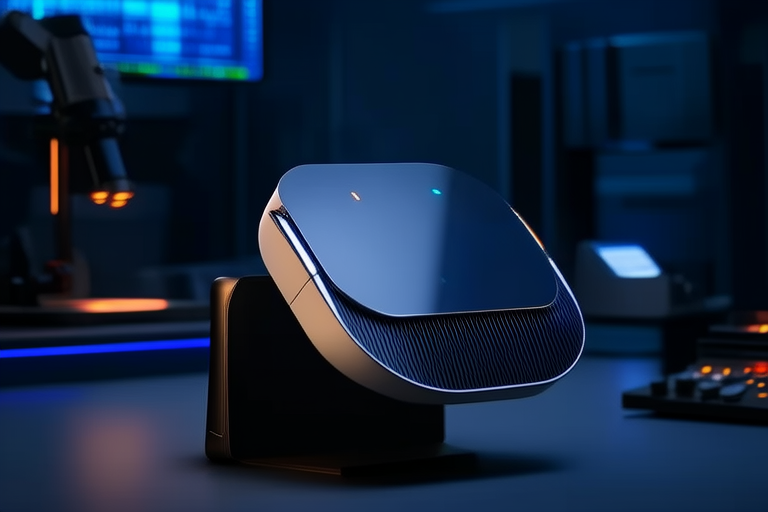“`html
Seeing Beyond Sight: Innovations in Computer Vision for Smart Devices
Introduction
Computer vision is a field of artificial intelligence that enables machines to interpret and understand visual data from the world around them. Over the years, it has evolved from simple image processing techniques to complex algorithms capable of recognizing objects, faces, and even emotions. The integration of computer vision into smart devices has revolutionized industries ranging from healthcare to automotive.
In this article, we explore the evolution of computer vision, its core components, and how it powers various smart devices. We also examine the challenges and future prospects of this rapidly advancing technology.
Real-world applications include facial recognition in smartphones, object detection in autonomous vehicles, and gesture control in gaming consoles. These applications demonstrate the versatility and power of computer vision in enhancing user experiences and driving innovation.
Understanding Computer Vision
Definition and Core Components
Computer vision involves several key components: image acquisition, preprocessing, feature extraction, and decision-making. Image acquisition refers to capturing images using cameras or sensors. Preprocessing involves converting raw pixel data into a usable format. Feature extraction identifies important patterns within the image, while decision-making involves classifying or interpreting those patterns.
History and Milestones
The origins of computer vision can be traced back to the 1960s when researchers began developing algorithms to interpret simple shapes and lines. Significant milestones include the development of edge detection algorithms in the 1970s and the introduction of machine learning techniques in the 1980s and 1990s. The advent of deep learning in the early 2000s marked a turning point, enabling more accurate and efficient image recognition.
Advancements in Hardware
Advancements in hardware, particularly the rise of Graphics Processing Units (GPUs) and high-resolution sensors, have been instrumental in driving progress in computer vision. These improvements allow for faster processing speeds and higher quality image data, facilitating more sophisticated algorithms.
Applications in Smart Devices
Types of Smart Devices
Computer vision is integral to numerous smart devices, including smartphones, drones, autonomous vehicles, and security systems. Each device leverages computer vision in unique ways to enhance functionality and user experience.
Specific Examples
Facial recognition technology in smartphones allows users to unlock their devices securely. Object detection in autonomous vehicles helps navigate roads safely. Gesture control in gaming consoles provides intuitive interaction methods. These applications showcase the diverse capabilities of computer vision.
Benefits and Challenges
The benefits of incorporating computer vision into smart devices include improved accuracy, enhanced user experiences, and increased efficiency. However, challenges such as privacy concerns, computational demands, and ethical considerations must be addressed.
Key Technologies Driving Innovation
Deep Learning and Neural Networks
Deep learning, particularly convolutional neural networks (CNNs), has significantly advanced computer vision by enabling machines to learn from vast amounts of data. This has led to breakthroughs in areas like facial recognition and object detection.
Edge Computing, AR, and VR
Edge computing allows for real-time processing of data on local devices, reducing latency and improving performance. Augmented Reality (AR) and Virtual Reality (VR) further expand the possibilities of computer vision by overlaying digital information onto the physical world.
Emerging Trends
Emerging trends in computer vision include the development of more efficient algorithms, the integration of AI with IoT devices, and the exploration of new applications in fields like healthcare and education.
Challenges and Future Prospects
Current Limitations
Despite significant progress, computer vision still faces challenges such as limited accuracy in low-light conditions, difficulties in recognizing occluded objects, and the need for large datasets for training models.
Potential Developments
Future developments may include more robust algorithms, improved hardware, and better integration with other AI technologies. Ethical considerations, such as privacy and bias, will also play a crucial role in shaping the future of computer vision.
Societal Impact
The widespread adoption of advanced computer vision systems could lead to significant changes in society, from transforming industries to improving accessibility and safety.
Conclusion
Computer vision is a powerful tool that continues to evolve and transform the way we interact with smart devices. Its applications span across various industries, offering both benefits and challenges. As technology advances, it is essential to stay informed about ongoing innovations and consider the ethical implications of these advancements.
We encourage readers to explore the rich landscape of computer vision and its potential to drive positive change in our increasingly connected world.
References
[1] “A Brief History of Computer Vision,” IEEE Spectrum, 2020.
[2] “Deep Learning for Computer Vision,” MIT Press, 2019.
[3] “The Future of Computer Vision,” TechCrunch, 2021.
“`


